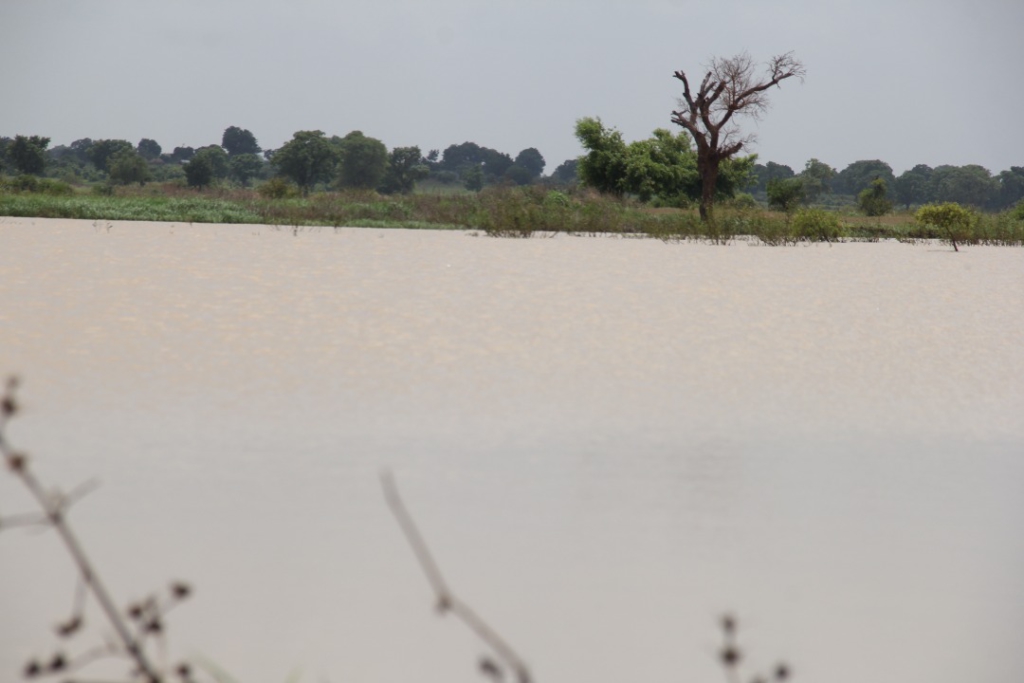
Audio By Carbonatix
The Food and Agriculture Organization (FAO) has released updated guidelines for estimating water use efficiency in agriculture.
The goal of the newly released publication, "Guidelines for the calculation of the agriculture water use efficiency for global reporting," is to help countries comprehend and calculate the agronomic parameters used in the calculation of the agricultural component of the Sustainable Development Goal (SDG) indicator 6.4.1 on the change in water use efficiency over time.
The publication offers a thorough explanation of the calculation procedure to assist nations in producing a more accurate estimation using their own national data.

The updated recommendations also include a detailed explanation of the calculation procedure for nations that have more complete and precise data on their primary crop areas and yields, as well as the minimal standard technique utilizing an approximated or default value suggested by FAO.
The three economic sectors are taken into consideration while computing the SDG indicator 6.4.1, "Change in water use efficiency over time." The International Standard Industrial Classification of all Economic Activities (ISICS) codes are used to identify the following sectors: agriculture, forestry, fishing, mining and quarrying manufacturing, electricity, gas, steam, and air conditioning supply, and building.
The guidelines are limited to the irrigated agriculture, livestock, and aquaculture sectors of the agricultural sector covered by the SDG 6.4.1 indicator.
As with the other sectors, the gross value added (GvA) for irrigated agriculture, livestock, and aquaculture and the amount of water used by these agricultural sub-sectors are compared in the computation of the irrigated agriculture, livestock, and aquaculture water use efficiency.
A future-looking scenario for food and agriculture from 2007 to 2050 is presented in the FAO perspective study "Agriculture towards 2030-2050." Under the assumptions of moderate economic growth and population dynamics, the supply and demand of the primary agricultural commodities, as well as the usage of fertilizers and natural resources, are forecast. The scenarios are based on yields and acreage under both irrigated and rainfed circumstances by country and crop in 2006.

The yield ratio, or the difference between rainfed and irrigated conditions, is estimated for each crop with data available in each country using the same baseline data from 2006.
The guideline offers a starting point for comprehending and evaluating the agronomic factors used to determine the SDG6.4.1 indicator for water use efficiency. It explains how to use the numerous irrigation-related data that are available in AQUASTAT and the yield ratio that the FAO has proposed as a first stage calculation of a country's portion of the agricultural GVA that can be attributable to irrigated agriculture.
The FAO-provided data can be accepted and used for inclusion in the 6.4.1 computation for nations with limited capacity. However, countries are permitted to utilize more precise national data in the FAOAQUASTAT questionnaire as well as in greater detail during a presentation of their voluntary National Review where it is clear that the data does not sufficiently reflect the situation in a country.
FAO advises countries that intend to use national data to calculate yield ratios to do so in accordance with the suggested methodology in order to ensure that the resulting ratios and, consequently, the SDG 6.4.1 indicators, can be compared internationally.
Latest Stories
-
Douri-Naa predicts victory for ‘Second Dombo’ Bawumia in NPP primaries and 2028 election
23 minutes -
2025/25 GPL: Asante Kotoko pip Dreams to end 4-game winless run
59 minutes -
2025/26 GPL: Swedru All Blacks beat Vision FC 2-0
1 hour -
Ghanaian PhD students petition UK prime minister over unpaid scholarships and deportation fears
1 hour -
2025/26 GPL: Simba Sylvester Brace Powers Basake Holy Stars Past Samatex
1 hour -
Ghanaian students at UK universities face deportation amid funding crisis
1 hour -
Ghana places 18th in Africa as most developed country; makes little progress in Human Development Index
2 hours -
Restoring Ghana’s Wetlands: Prudential Life leads mangrove restoration in Ada area
2 hours -
2025/26 GPL: Apostles hold firm to beat Karela United 2-1
2 hours -
2026 World Cup: Ghana’s Ambassador to US assures GFA of Embassy support for participation
3 hours -
Fitch Solutions warns Ghana against downside risks to economic growth, Islamist insurgency
3 hours -
Esports Federation Phygital Basketball team to make history in Abu Dhabi
3 hours -
Cedi to weaken by 8% against US dollar in 2026
3 hours -
Joe Mettle, Kwame Eugene and Kofi Kinaata thrill patrons at MTN Festival of Nine Lessons and Carols
3 hours -
I changed Rhythms of Africa’25 date to honour Daddy Lumba’s funeral – Sonnie Badu
4 hours

